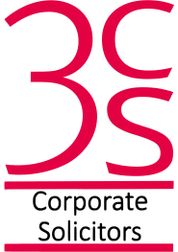The UK Supreme Court announced a decision on 1st February 2023 that changed the law of nuisance considerably. The decision in the case of Fearn and others v Board of Trustees of the Tate Gallery has wide-ranging implications. The impact on commercial landlords, developers, tenants as well as property owners could be substantial, especially where properties overlook others.
What are the facts of the case?
A new extension was created on the top floor of the Blavatnik Building, part of the Tate Modern Gallery in London which contained a viewing platform. Visitors could use the viewing platform to observe the London skyline but it also allowed them to look into the flats of neighbouring buildings. The occupants of these flats felt this was a breach of their privacy as this amounted to a visual intrusion. The UK Supreme Court agreed.
What does this mean for developers and owners?
In cases where buildings overlook others, there is a distinct risk of a nuisance being caused because of visual intrusions. Each case will be assessed on its own merits and therefore, property developers and/or existing and future building owners need to be mindful of the risks of a nuisance. A court could apply an injunction on the offending party preventing the use of a property as originally intended and/or damages could be awarded against the building’s owners, the financial consequences of which could be severe.
What can be done to minimise the risk of causing a nuisance?
When designing or constructing buildings, particularly where there are neighbouring residential properties, extra care must be taken by developers to ensure that the building design does not create possibilities for their occupants to visually intrude upon neighbouring properties. Practically, this may be hard or impossible to achieve, especially in locations around Central London, where floor-to-ceiling windows are common.
Landlords need to ensure that adequate provisions exist in the leases they grant so that the tenants observe the restrictions within them, to minimise the risk of a nuisance being caused because of visual intrusion. Tenants need to be mindful of protecting against any risk of enforcement that may be passed to them in the terms of the Lease.
What is a Deed of Release and how might it help?
Property owners/developers may be able to negotiate with residents or similarly affected parties to agree on measures or offer payment as a form of compensation to release any claims of nuisance by way of a Deed of Release. Such a release can then be noted on the respective land registry titles of the properties they concern in a similar manner in which rights of light issues are negotiated and released. This is a developing area of law and it may be the case that valuers in the future, will be able to quantify the value of the waiver of such a “nuisance right”.
How 3CS can help
If you are a commercial landlord or tenant, it is crucial that you are properly advised on the way a nuisance could arise. The case of Fearn and others v Board of Trustees of the Tate Gallery has substantially widened the risk of enforcement against nuisance in a way that you may not have considered. Our legal experts can assist in identifying risks and then advise you on the various ways you can minimise such risks, including negotiating and drafting a Deed of Release for potential nuisance claims.
For further legal help and advice on any commercial property matter please get in touch with your usual 3CS contact.

















